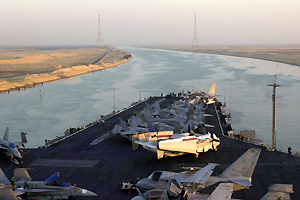A country of sierras
Mexico is bound to the north by the United States, to the south by Guatemala and Belize, to the east by the Gulf of Mexico and to the west by the Pacific Ocean.
This country has two large peninsulas (Yucatan to the southeast and Baja California to the northwest) and an elevated central plateau flanked by mountain chains: the Western and Eastern Sierra Madre Mountains and the Cordillera Neovolcanica, where a number of sierras begin. It is in this mountain range that the highest peak in the country, the Citlaltépetl or Orizaba Volcano, is located.
The climate on the coast and lowlands is warm; temperate on the plateaus and in the north, and dry in the northwest. The southeast is very humid.
Mixed Economy
Mexico combines agriculture (around 12% of its total area is cultivable) with the production and extraction of petroleum and natural gas. Its main agricultural products are maize, wheat, rice and beans. In mining, Mexicans are the world’s largest producers of silver, bismuth and celestite.
States
Executive power is held by the President of the Republic, who is both the Head of State and Government, and the 18 Secretaries of State. Legislative power is exercised by the Chamber of Deputies (500 members) and the Senate (128 members).
Judicial power is exercised by the Supreme Court of Justice of the Nation, the Council of Judicature, the Council of Federal Judicature, the Electoral Tribunal and the Fiscal Tribunal of the Federation.
The country is divided for administrative purposes into 31 states and a federal district. Each state is sovereign and has its own Constitution and Congress.
Urban Dwellers
The urban population makes up 76% of the total inhabitants of Mexico. Thousands of Mexicans cross the border with the United States illegally every year in search of better opportunities. Mexico’s growth rate is 1.5%. Around 60% of the population is of mixed ancestry, 33% of indigenous origin and the rest of European descent.








